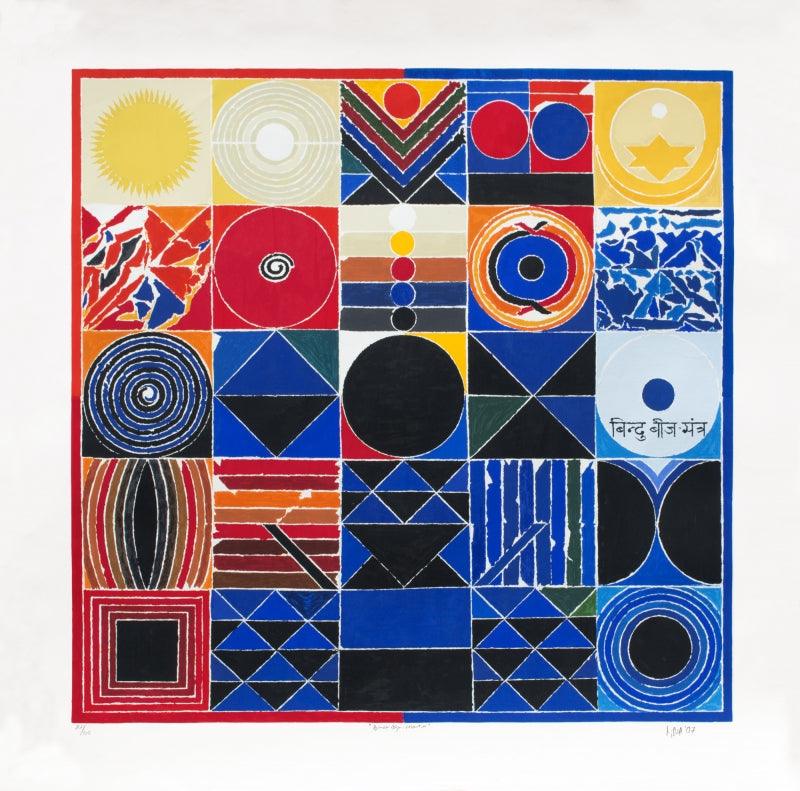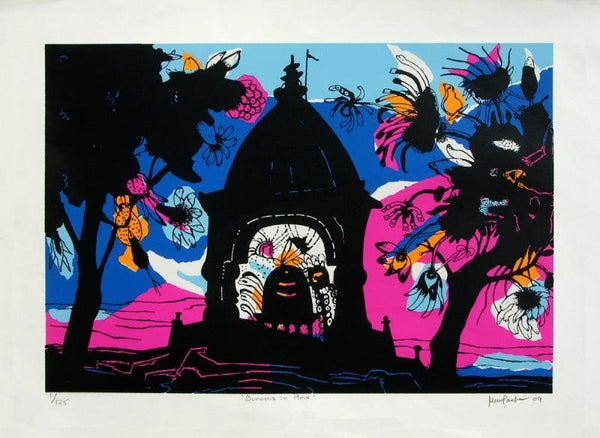The Allure of Serigraphy: Owning a Piece of Artistic Legacy
Art appreciation extends beyond visual experience alone; it involves delving deeper into the creative process, understanding its story behind, and appreciating an artist's vision. Owning art allows you to intimately connect with this vision - turning any space into your personal gallery! But with so many artistic mediums available today, choosing the appropriate one may seem daunting - this article delves into serigraphy (also known as silkscreen printing), exploring its history, production process and compelling reasons to consider serigraphs for your collection.
Unveiling Serigraphy: An Age-Old Technique
Serigraphy has an impressively rich history dating back centuries. While the exact origins remain undetermined, evidence points towards stencil-based printing techniques being practiced as early as ancient China and Egypt - precursors to serigraphy itself. These early methods involved placing designs onto thin sheets made of paper or animal skin before applying color through any open areas in the design.
Transition to Europe during the 17th century and we see Japanese lacquer techniques using silk mesh screens emerge; this approach would eventually pave the way for serigraphy's modern form to emerge during the 19th century.
Serigraphy, first coined by American artist Charles Faulker during the 1930s, has only recently come into common usage due to its silk mesh printing processes. Prior to that term being coined it was more frequently known by its former moniker of silkscreen printing.
In the 20th Century, serigraphy saw an unprecedented surge in its popularity within Pop Art movements such as Andy Warhol's and Roy Lichtenstein's Pop Art movement. Led by Andy Warhol and Roy Lichtenstein among others, Pop Art celebrated mass production and popular culture imagery while serigraphy's ability to reproduce vibrant colors and graphic elements fit perfectly with its aesthetic. Warhol found serigraphy an easier and more democratic way of creating multiples of his artwork thereby making art accessible for a wider audience.
Today, serigraphy remains an immensely versatile printmaking technique, used by artists across various styles and disciplines to produce breathtaking limited-edition prints that range from photorealistic portraits to abstract geometric compositions - there are endless opportunities with serigraphy!
Prep Work: When beginning their creative work, artists start by designing an original piece - this could include paintings, drawings or digital designs.
Film Separation: Either professional printers or artists themselves may then create film positives and negatives to act as stencils, allowing ink to pass through specific areas during printing. Each color of an artwork requires its own separate film stencil.
Screen Preparation: First, a light-sensitive emulsion is applied to a nylon mesh screen and exposed to light. After positioning a film positive or negative onto this surface, exposed areas of emulsion harden while unexposed ones remain soft - once washed clean these open areas allow ink through during printing.
Printing: Once prepared, the screen must be carefully aligned with its printing surface - either paper, canvas, fabric or even metal - before ink is squeegeed across it in a continuous stream to force its way through any open areas on the stencil and onto its substrate substrate. This process must be repeated for every color layer until an image emerges that matches each one precisely to form its final form.
Editioning and Finishing: After printing is complete, each print must be allowed to dry thoroughly before being signed and numbered by the artist as part of a limited edition run.
Serigraph production requires skilled hands, meticulous attention to detail, and a keen eye for color accuracy. Each serigraph represents both an artist's vision as well as technical expertise from their printer.
Serigraphs Can Offer More Than Visual Appeal There are several compelling advantages of owning serigraphs beyond simply adding visually pleasing art pieces to your collection.
Here are a few compelling arguments in favor of investing in serigraphs:
Own a Piece of the Artist's Vision: Serigraphs aren't mere reproductions; they are created directly from an artist's artwork in collaboration with them or an experienced printmaker, to ensure they accurately reflect and preserve its essence.
Limited Editions Are Valuable: Serigraphs differ from mass-produced posters in that they are printed in limited editions of around one to several hundred prints, adding scarcity and increasing its value over time as it sells off. As the edition sells off, so too does its value grow over time. As each edition sells out, individual prints may increase in value over time - creating an investment opportunity. Furthermore, owning limited-edition serigraphs gives your collection an exclusive feel with pieces not readily available elsewhere.
Tactile Appeal: For today's digital world dominated by screens, serigraphs offer a welcome tactile experience. Their textured surface of ink on paper, subtle color variations and artist's signature all combine to foster a deeper relationship with their artwork - inviting viewers to appreciate both craftsmanship and physical presence of this form of art.
Serigraphy Captures the Vibrance of Color: Serigraphy excels at capturing vibrant, saturated hues through layering of inks during printing process, producing depth and richness not possible with other printing methods. This quality makes serigraphy perfect for artists working with bold hues or graphic elements - having one at home allows you to experience all its glory - adding life and vibrancy into any living space!
Versatility across Artistic Styles: Serigraphy's versatility spans artistic genres. It can be used to produce everything from photorealistic portraits to abstract geometric compositions. Because of this versatility, serigraphs appeal to a broad array of art collectors - traditional landscape enthusiasts as well as pop art enthusiasts are likely to find serigraphs that meet their taste!
Support Living Artists: By purchasing serigraphs, you directly support living artists who created them. Your purchase allows them to continue creating and gives their work recognition. By investing in serigraphs you become patron of the arts and contribute towards building a vibrant artistic community.
Investment Potential: Limited edition serigraphs by established or emerging artists often appreciate over time due to scarcity of edition and rising demand for original art work, creating investment potential that some serigraphs may become significant assets over time. While not every serigraph will become valuable assets over time.
Owning Art History: Many iconic 20th-century artworks associated with Pop Art were produced using serigraphy. Owning one can allow you to connect with a significant art movement while possessing a tangible link from that artistic era - whether that's Warhol soup can or Lichtenstein comic book adaptation!
Beyond Aesthetics: Additional Considerations
Conduct an Initial Artist Research: Before investing in a serigraph, take time to do your due diligence on its creator. Researching their background, artistic style and past sales history is crucial in order to make an informed decision that fits within both your aesthetic and collecting goals.
Authenticity: Always purchase serigraphs from reputable galleries or dealers that can vouch for their authenticity by providing an official certificate signed and numbered by both artist and publisher.
Edition Size and Value: When considering the value of serigraphs, edition sizes play a vital role. In general, smaller editions tend to be more valuable. When making this decision, keep your budget and collecting goals in mind when making this choice.
Condition: Thoroughly inspect your serigraph for signs of damage such as tears, faded areas or spots caused by light or moisture exposure. A serigraph in excellent condition will retain more value over time.
Framing: Proper framing will protect and enhance the presentation of your serigraph, creating an elegant piece to be displayed for years. Select a frame that complements both the art work and decor in which it will hang; additionally look for acid-free and UV protective materials to extend its life span.
Conclusion
Serigraphy provides a compelling way to experience and own art. By understanding their creation process and history, serigraphs allow you to appreciate their artistic merit and value. From Pop Art to photorealistic prints, serigraphy offers diverse possibilities for any collection - you could connect with an artist's vision while supporting living artists as well as potentially investing in an piece of art history! So next time you visit an art gallery or online marketplace, explore serigraphy's allure and discover an artistic legacy just waiting to be uncovered!











